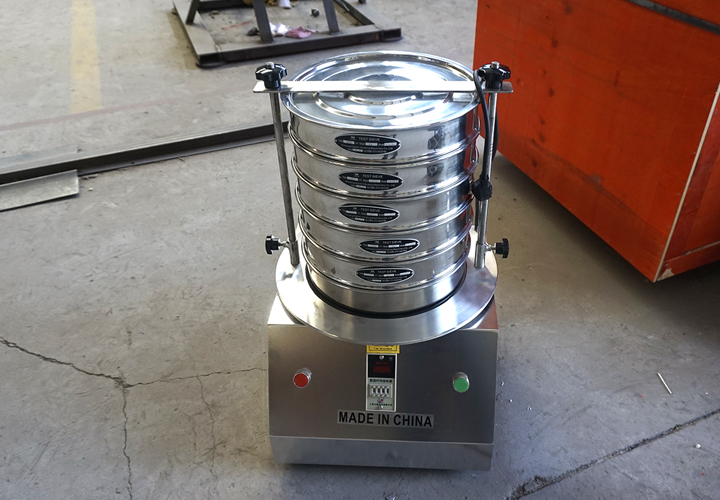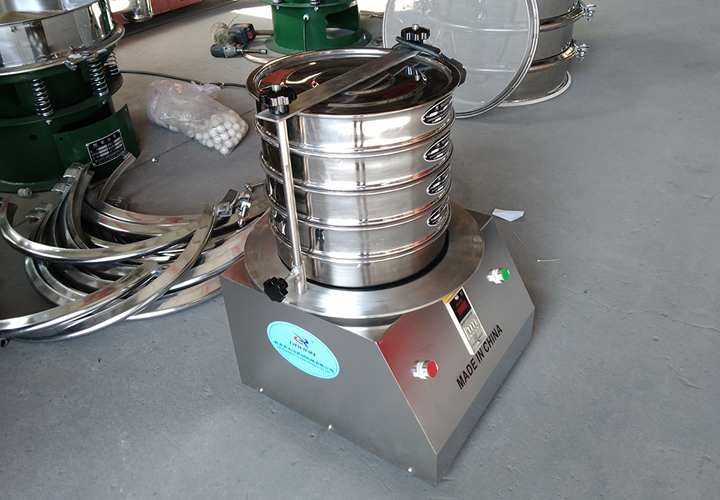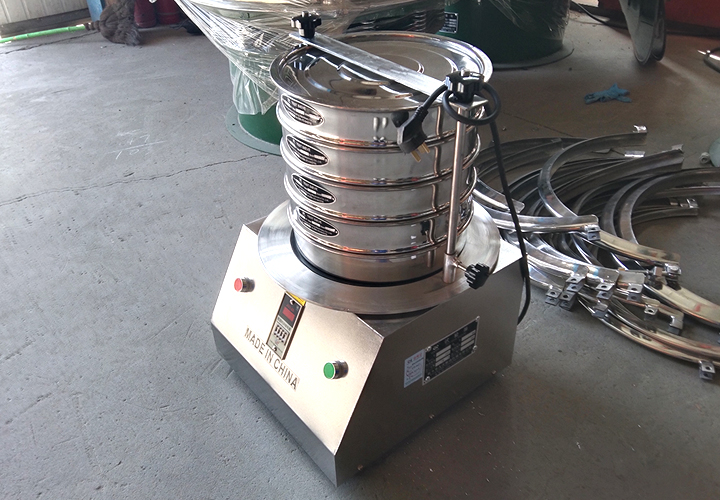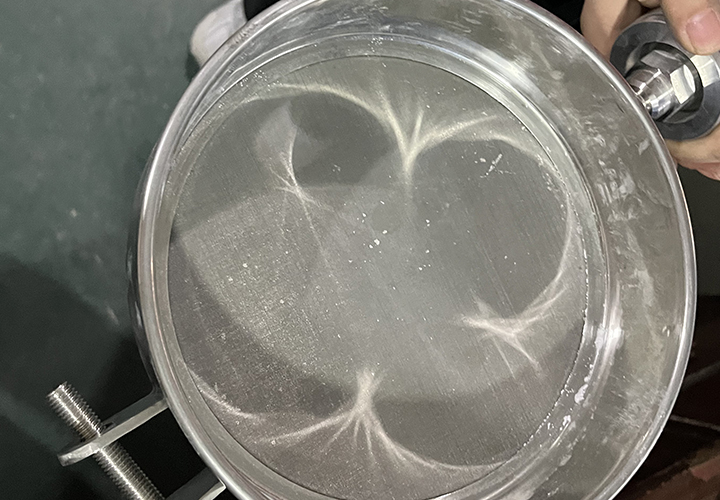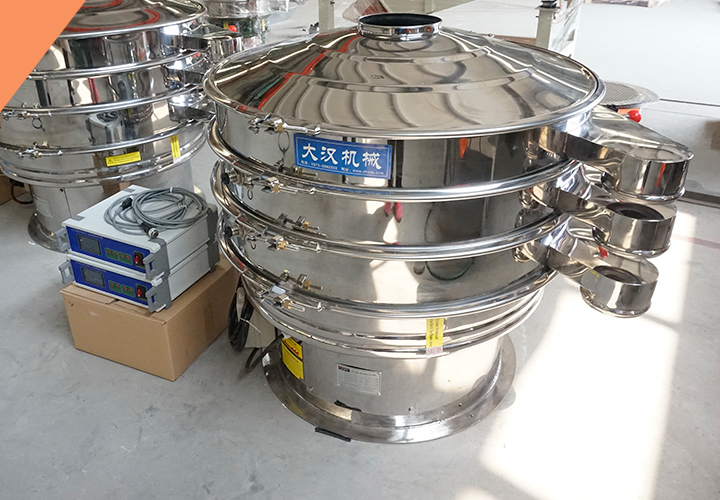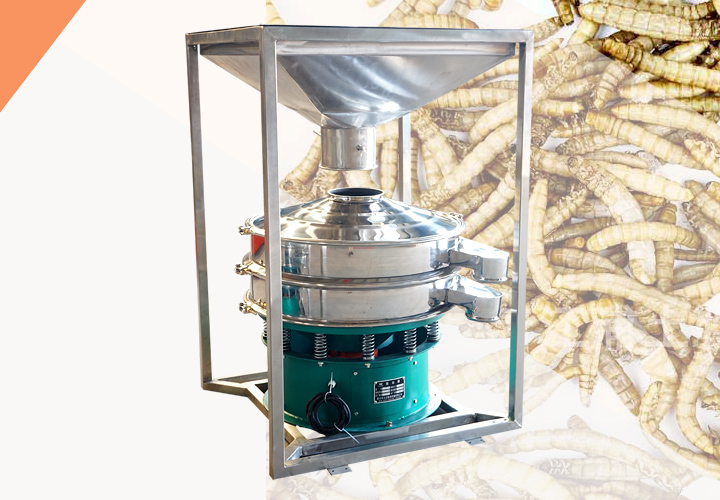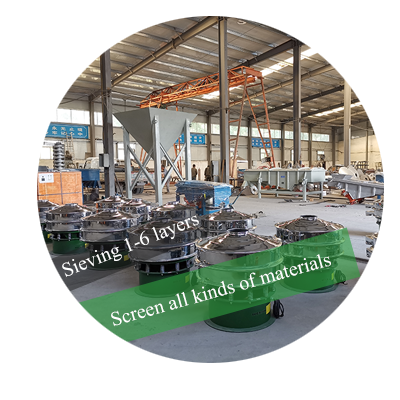Standard test sieve
![[field:title/]](/uploads/241028/1-24102Q000541M.jpg)
Callback
| Aperture size: 0.02-2.36 mm | Material: 304 stainless steel / brass / chrome-plated |
Frame diameter: 500/400/300/200/120/80/75mm, or other sizes provided according to your requirements.
Surface type: Woven wire mesh / perforated plate / electroformed mesh
What is Standard test sieve?
Standard test sieve is a precision tool for particle size analysis and classification of granular materials, used to screen and separate materials of different particle sizes. It is mainly used in laboratories to perform standard inspections, screening, filtering, and testing on the particle size structure, liquid solid content, and impurity content of granular and powdery materials. It can automatically stop and can accurately separate 2 to 7 particle segments of granular materials at the same time.
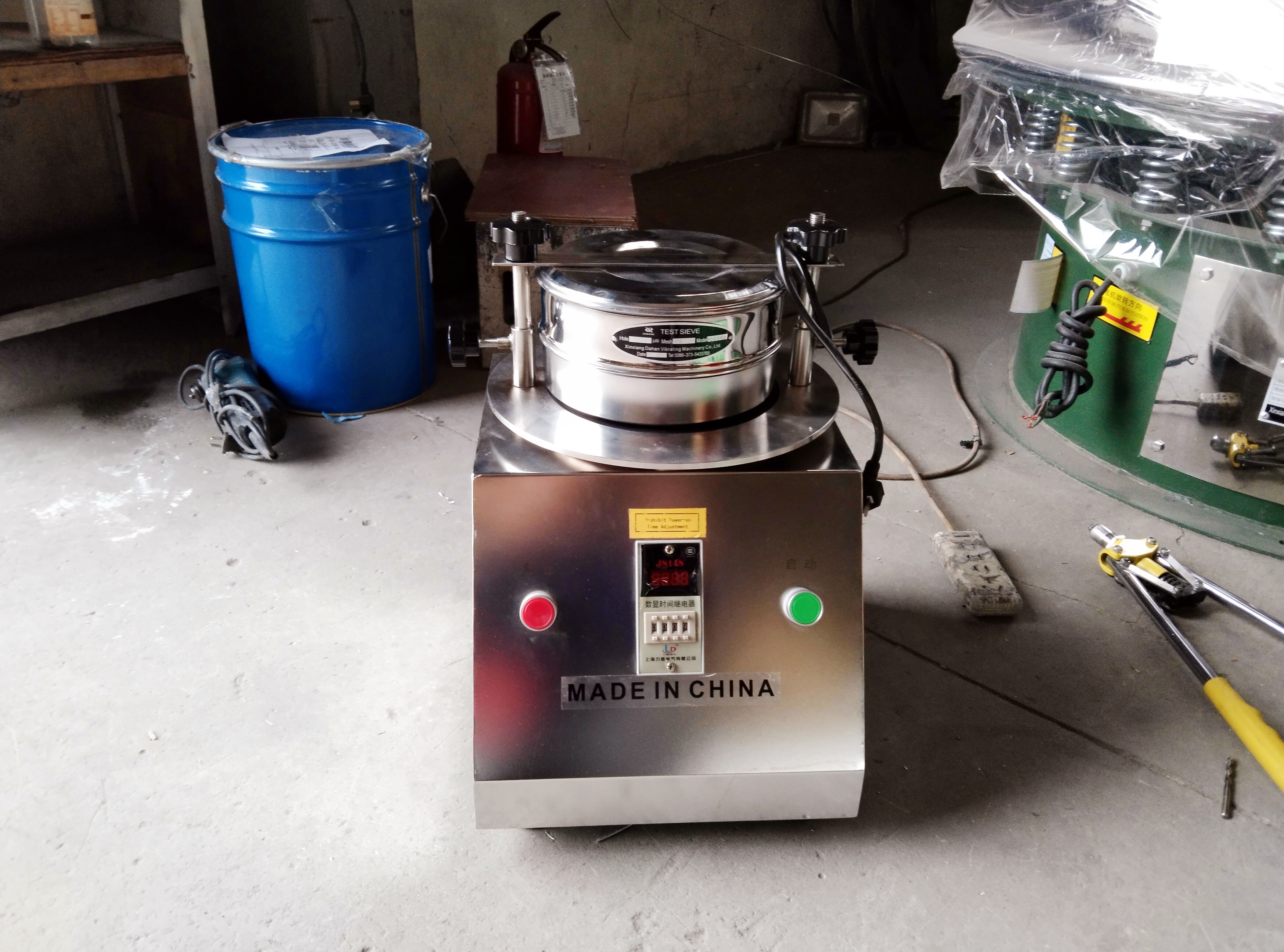
What are the characteristics of Standard test sieve?
Highly accurate screening, using a high-precision micro-mesh screen, capable of screening particles ranging from 0.025 to 3mm.
Compact, lightweight, and easy to move, it features a portable handle, making it suitable for rapid deployment in the lab or field.
The platform-based design eliminates the need for fixed installation and can be placed directly on a lab bench or work surface.
A programmable automatic shutoff from 1 minute to 24 hours prevents operator error and ensures experimental reproducibility.
Constructed of wear-resistant and high-temperature-resistant 304 stainless steel, the surface features an anti-corrosion treatment, making it suitable for humid and dusty environments.
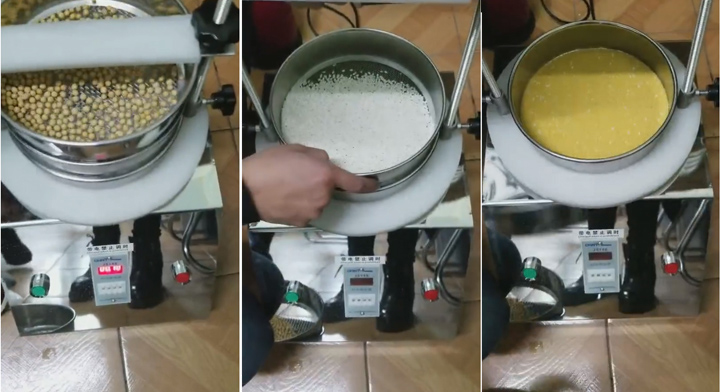
The structure of standard test sieve
A standard test sieve consists of a sieve frame, a sieve mesh, and a base. The sieve frame is typically circular, the sieve mesh is woven to standard specifications and precisely installed on the sieve frame, and the base is used to collect the screened material.
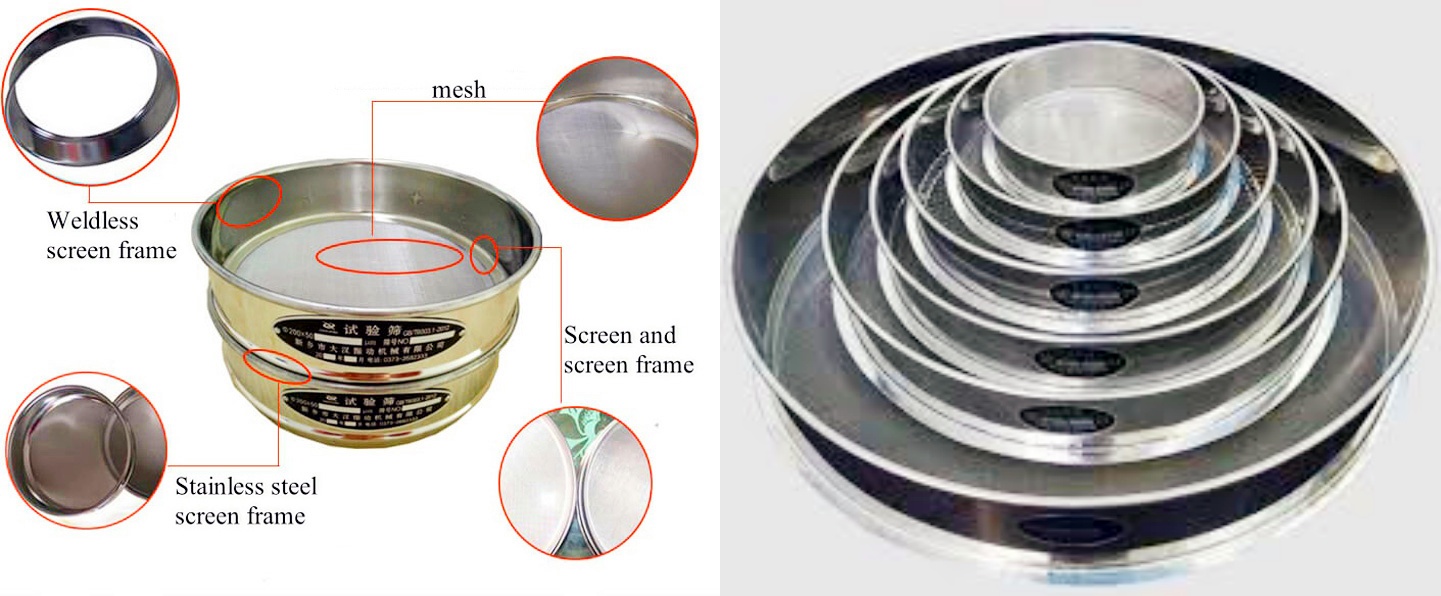
Screen frame: generally made of stainless steel, brass or other corrosion-resistant materials to ensure screening accuracy and durability.
Screen: made of wire mesh or perforated plate, the aperture is strictly in accordance with international or national standards such as ISO, GB, ASTM, JIS, etc.
Screen cover and screen bottom: used to seal and collect screened materials to prevent sample loss.
What types of standard test sieve are there?
Standard test sieves are classified into types based on the material of the manufacturing equipment and the manufacturing process, including brass, nylon, stainless steel, perforated, round hole, and woven mesh.

Brass sieves: Made of brass, they have weak corrosion resistance but are low cost. They are commonly used for particle size analysis and are easy to process but prone to oxidation.
Nylon sieves: Made of nylon, they are lightweight and wear-resistant, suitable for non-corrosive materials and anti-static, but have lower strength.
Stainless steel sieves: Made of 304 or 316 stainless steel, they are corrosion-resistant, heat-resistant, and have a long service life. They are suitable for precision grading and handling corrosive materials.
Perforated sieves: Stamped from metal plate, they offer a variety of hole patterns (round, square, etc.), high screening accuracy, and are suitable for screening large particles.
Circular hole sieves: Made of stainless steel or brass, they have circular holes and uniform mesh size. They are suitable for particle grading or size detection.
Woven mesh sieves: Made of woven wire, they have a fine mesh and good air permeability. They are widely used for screening powders or fine particles.
How does the standard test sieve work?
The working principle of the standard test sieve is based on the principle of vibration screening. The test sieve is usually composed of a sieve frame, a screen, a vibration mechanism and a support structure. When the test sieve is started, the vibration force generated by the vibration mechanism is transmitted to the sieve frame, causing the sieve frame and the screen to vibrate. After the particles are put into the sieve frame, they are affected by the vibration force and jump on the screen. Small particles fall into the container below through the sieve holes, while large particles remain on the surface of the screen. Through screens of different specifications, particles of different sizes can be separated and classified. Particles are separated during vibration, and the screening effect is affected by parameters such as amplitude and frequency. After screening, particle size analysis can be performed based on particle distribution to provide data support for production process optimization and product quality control.
Recommended table of standard test sieve mesh numbers
|
Mesh number (Mesh) |
sieve hole diameter (mm) |
sieve hole diameter (μm) |
applicable fields |
|
5 |
4.000 |
4000 |
sand, ore, coarse granular materials |
|
10 |
2.000 |
2000 |
sand, chemical granules, coarse grains |
|
20 |
0.850 |
850 |
granular fertilizer, plastic granules |
|
40 |
0.425 |
425 |
cement, flour, medicinal powder coarse sieve |
|
60 |
0.250 |
250 |
fine chemical powder, Pesticide powder |
|
80 |
0.180 |
180 |
graphite powder, pigment powder |
|
100 |
0.150 |
150 |
ceramic powder, food additives |
|
120 |
0.125 |
125 |
metallurgical powder, mineral powder |
|
200 |
0.075 |
75 |
fine chemicals, pharmaceutical powder |
|
300 |
0.050 |
50 |
ultrafine powder, carbon powder |
|
400 |
0.038 |
38 |
nanomaterials, catalysts |
|
500 |
0.025 |
25 |
ultrafine chemicals, pharmaceutical powder |
ASTM E11 - SIEVE DESIGNATION
| Standard | Altern. | Standard | Altern. | Standard | Altern. |
|---|---|---|---|---|---|
| 125.00 mm | 5.00 | 9.50 mm | 3/8 | 425 µm | No. 40 |
| 106.00 mm | 4.24 | 8.00 mm | 5/16 | 355 µm | No. 45 |
| 100.00 mm | 4 | 6.70 mm | 0.265 | 300 µm | No. 50 |
| 90.00 mm | 3 ½ | 6.30 mm | ¼ | 250 µm | No. 60 |
| 75.00 mm | 3 | 5.60 mm | No. 3 ½ | 212 µm | No. 70 |
| 63.00 mm | 2 ½ | 4.75 mm | No. 4 | 180 µm | No. 80 |
| 53.00 mm | 2.12 | 4.00 mm | No. 5 | 150 µm | No. 100 |
| 50.00 mm | 2 | 3.35 mm | No. 6 | 125 µm | No. 120 |
| 45.00 mm | 1 ¾ | 2.80 mm | No. 7 | 106 µm | No. 140 |
| 37.50 mm | 1 ½ | 2.36 mm | No. 8 | 90 µm | No. 170 |
| 31.50 mm | 1 ¼ | 2.00 mm | No. 10 | 75 µm | No. 200 |
| 26.50 mm | 1.06 | 1.70 mm | No. 12 | 63 µm | No. 230 |
| 25.00 mm | 1 | 1.40 mm | No. 14 | 53 µm | No. 270 |
| 22.40 mm | 7/8 | 1.18 mm | No. 16 | 45 µm | No. 325 |
| 19.00 mm | ¾ | 1.00 mm | No. 18 | 38 µm | No. 400 |
| 16.00 mm | 5/8 | 850 µm | No. 20 | 32 µm | No. 450 |
| 13.20 mm | 0.530 | 710 µm | No. 25 | 25 µm | No. 500 |
| 12.50 mm | ½ | 600 µm | No. 30 | 20 µm | No. 635 |
| 11.20 mm | 7/16 | 500 µm | No. 35 |
AVAILABLE DIAMETERS IN WOVEN WIRE SIEVES
| Diameter | Full Height | Half Height | Extra depth | Frame Material |
|---|---|---|---|---|
| 8" | 2" | 1" | 4", 8" | Stainless Steel |
| 12" | 3" | 1" | 6" | Stainless Steel |
| 100 mm | 40 mm | - | Stainless Steel | |
| 200 mm | 50 mm | 25 mm | 100 mm, 200 mm | Stainless Steel |
| 300 mm | 75 mm | 40 mm | Stainless Steel | |
| 400 mm | 65 mm | - | Stainless Steel | |
| 450 mm | 100 mm | 60 mm | 300 mm | Stainless Steel |
AVAILABLE DIAMETERS IN PERFORATED PLATE SIEVES
| Diameter | Full Height | Half Height | Frame Material |
|---|---|---|---|
| 8" | 2" | 1" | Stainless Steel |
| 12" | 3" | 1" | Stainless Steel |
| 200 mm | 50 mm | 25 mm | Stainless Steel |
| 300 mm | 75 mm | 40 mm | Stainless Steel |
| 400 mm | 65 mm | - | Stainless Steel |
| 450 mm | 100 mm | - | Stainless Steel |
LIDS AND RECEIVERS - DIAMETERS AND MATERIALS
| Diameter | Frame Material |
|---|---|
| 8" | Stainless Steel |
| 12" | Stainless Steel |
| 100 mm | Stainless Steel |
| 200 mm | Stainless Steel |
| 300 mm | Stainless Steel |
| 400 mm | Stainless Steel |
| 450 mm | Stainless Steel |
How many types of mesh are there for standard test sieves?
Standard test sieves come in three common types: metal mesh, perforated mesh, and electroformed mesh. Perforated mesh has the largest mesh size, electroformed mesh is used for high-precision screening, and metal mesh has the most commonly used mesh size.
Standard test sieve mesh type 1: wire woven mesh
The most widely used mesh - square holes from 2.36mm to 0.02mm
Wire mesh screen: aperture range 0.02-2.36mm, good flexibility, suitable for most powder screening.

Wire woven mesh has low cost and good flexibility, but relatively high precision (large mesh is allowed), and the mesh may be deformed. The mesh precision can be controlled by expanding and shrinking the holes, and the holes can be fixed by electrochemical methods. Generally, manufacturers with high-precision mesh production capabilities are required to ensure mass production. The most widely used industry is the diamond industry, especially export manufacturers require a standard negative difference, because the foreign surplus is half a size different from that of China, and the basic particles account for more than 90%.
Standard test sieve mesh type 2: perforated plate mesh
Mainly used for large meshes - round and square holes from 0.2mm to several hundred mm
Perforated plate screen: aperture 0.2mm to hundreds of millimeters, strong impact resistance, mostly used for large particle materials (such as sand, gravel, coal samples).

Perforated plate mesh refers to a mesh that uses a punch press to punch out the target pattern in the plate to be processed. The materials include stainless steel, aluminum plate, hot and cold steel plate, copper plate, PVC plate film, etc. The mesh precision of the perforated plate mesh is uniform and not easy to deform. It is mainly used for the detection of large particles. The hole types include long holes, round holes, square holes, triangular holes, fish scale holes, bridge holes, diamond holes, pentagonal holes, hexagonal holes, eight-shaped holes, cross holes, nail holes, plum blossom holes, herringbone holes, I-shaped holes and other special-shaped holes.
Standard test sieve mesh type 3: electroforming mesh
Mainly used for high-precision screening - each mesh can be within the average error range
Electroformed thin plate screen: accuracy can reach 1 micron, used for high-precision analysis of ultrafine powders (such as nanomaterials).

Electroforming mesh is manufactured by electrochemical method, with the highest precision. Theoretically, the precision can reach one micron. The characteristic is that the mesh of the rigid structure will not deform. The particle size distribution of electroforming filter materials is significantly narrowed. Compared with woven wire mesh filter materials, it requires cleaner and less maintenance, allowing longer filtration time and service life to greatly improve production efficiency. It has a wide range of applications in high-precision laboratory particle size detection scenarios.
Scope of application of standard test sieves
The Standard Test Sieve is suitable for scientific research and testing institutions to test the particle size distribution, quality inspection, and particle size classification of granular and powdery materials.
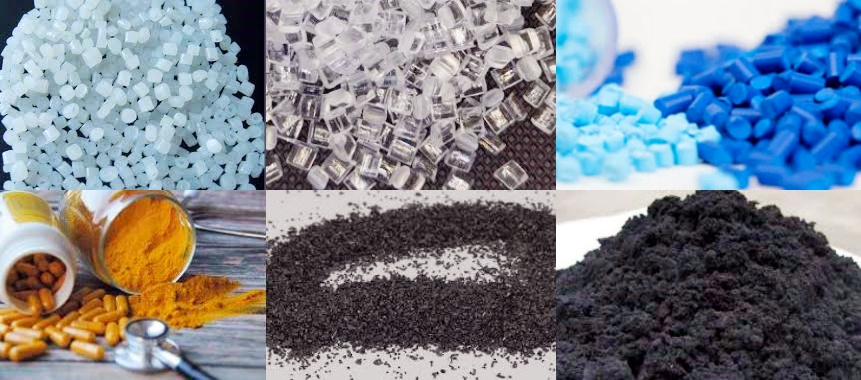
Particle size analysis of granular materials: used to determine the particle size distribution of powder or granular materials, such as sand, ore, metal powder, etc.
Quality inspection of powder materials: such as fineness inspection of cement, flour, medicinal powder, etc., to ensure that the product meets the quality standards.
Screening experiment: used for research laboratories and quality inspection agencies to study and test the particle size classification of materials.
How to use standard test sieve?

Standard test sieves are widely used in scientific research and production departments, laboratories, and quality inspection rooms in metallurgy, chemical industry, medicine, building materials, geology, national defense and other industries. They are used for vibration screening, filtration, and standard test detection of particle size structure, liquid solid content, and impurity content of granular and powdery materials.
Standard test sieve supplier
During the manufacturing process of our standard test sieves, DaHan Machinery, as an experienced manufacturer, ensures that the sieve mesh undergoes precise calibration to guarantee extremely narrow aperture size tolerances, ensuring the repeatability and comparability of test results. Each sieve is permanently marked with its mesh size, wire diameter, applicable standard, and unique serial number for easy traceability and quality control. The frame is polished or electrochemically treated to create a smooth, corner-free, and easy-to-clean surface, preventing sample residue. In addition to the above-mentioned high-quality manufacturing processes, the manufacturer also supports non-standard customized equipment, enabling the testing and sieving of various materials.
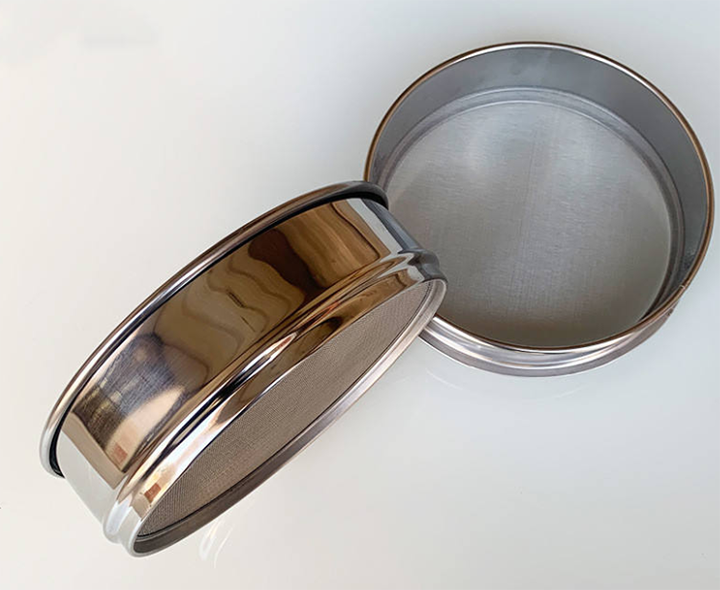
Standard Test Sieve Application Cases
In building material quality control, standard test sieves are used for aggregate particle size analysis. A cement plant screened incoming sand and gravel using a 200mm Φ standard sieve set (with apertures of 4.75mm, 2.36mm, and 1.18mm, among others) and sieved them for 5 minutes using an electric vibrating screen. The results showed a 4.75mm sieve residue of 12%, meeting the GB/T 14684-2022 standard requirement of ≤15%, confirming that the batch of sand and gravel met the grade requirements.
In flour processing for the food industry, companies use 80-mesh and 100-mesh test sieves to test flour fineness, ensuring agglomeration-free and uniform particle size to meet baking process requirements.
-
The vibration is uniform, and the excess powder on the surface of the material can be shaken to remove the excess powder.
-
Used to safely screen cocoa powder to remove impurities such as large particles, helping to ensure its quality and consistency
-
Screening black soldier fly feces and larvae can separate the worms and feces, saving labor
-
Standard test sieve price
Standard test sieve price ranges from US$30 to US$500, sieve sizes range from 3 inches to 12 inches, ...
-
Silicon powder for test sieve
Silicon powder for test sieve commonly used in various industrial applications, including electronics, metallurgy....
-
Dietary Supplements for Vibrating Sieve
Dietary supplements vibrating sieve As an efficient and reliable sieving equipment, it plays an important role in the production of dietary supplements. Through high-frequency vibra ...
-
Large vibrating screen equipment manufacturers
Xinxiang Dahan Machinery is a large-scale manufacturer specializing in the manufacture of vibrating screen equipment...

Email:
sale@xxdahan.com
WhatsApp:
+86 15236742901
Add:
1000m West of Forest Park,Yanjin County,Xinxiang City,Henan Procince,China.

